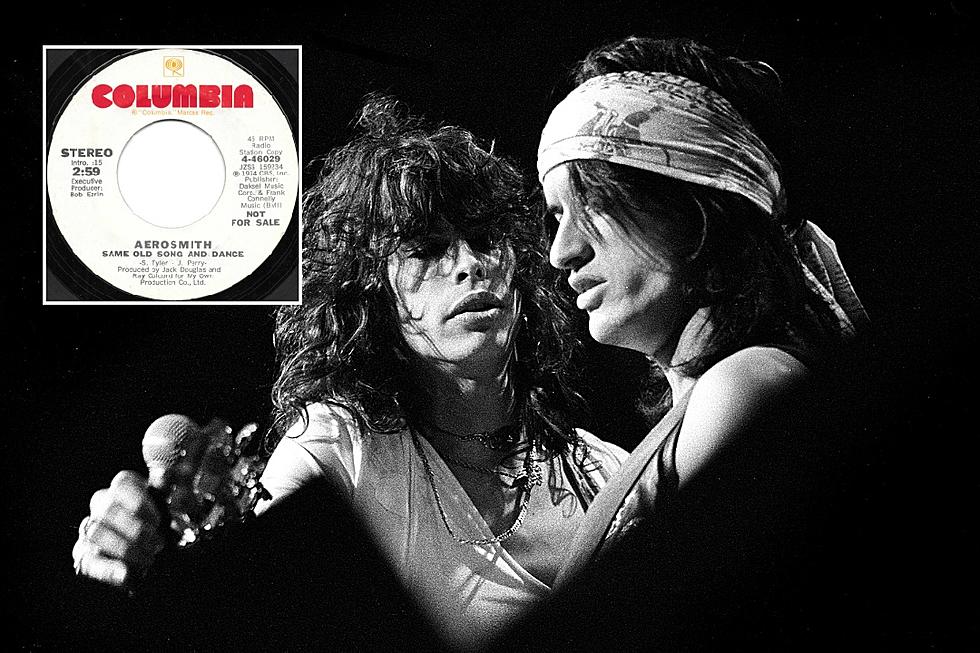
How Aerosmith’s Second Coming Culminated with ‘Big Ones’
The Toxic Twins had gotten clean. The song doctors had been summoned. The sound had been slickened. In the late ’80s, with the help of their new label Geffen, and producer Bruce Fairbairn, Aerosmith made a big play for the pop charts – and were crazy successful.
First came 1985's transitional Done with Mirrors. After guitarist Joe Perry rejoined the band, Aerosmith were supposed to get clean in advance of huge comeback. The group failed on both accounts: The cocaine-addicted members weren’t actually “done with mirrors,” and the LP failed to re-establish Aerosmith as one of America’s finest hard rock bands.
Geffen wanted the next album, 1987’s Permanent Vacation, to be buoyed by radio-friendly hits and demanded that Steven Tyler and Perry collaborate with outside songwriters: so-called song doctors such as Desmond Child and Jim Vallance. The boys resisted, but couldn’t argue with the results. Singles "Dude (Looks Like a Lady)" and "Rag Doll" landed in the Billboard Top 20, while power ballad "Angel" became Aerosmith’s highest-charting smash to date, soaring to No. 3. All three tunes featured outside songsmiths and all three were the group’s biggest hits in a decade.
For obvious reasons, Tyler, Perry and Co. didn’t tinker too much with the formula for their next couple of studio albums for Geffen. Both 1989’s Pump and 1993’s Get a Grip featured plenty of co-writers, were (mostly) recorded at Mountain View Studios in Vancouver and found Fairbairn in the producer’s chair – although the band encouraged him to rough up their sound just a bit more.
Watch Aerosmith's video for 'Cryin"
And Aerosmith kept a-rollin’: multi-platinum sales figures, titanic concert tours, MTV videos in heavy rotation, Top 10 hits, video games and even the band’s first Grammy Awards (for "Janie’s Got a Gun," "Livin’ on the Edge" and "Crazy").
In the process, Aerosmith opened themselves up to writing songs about social issues – sexual abuse with the thunderous "Janie’s Got a Gun," the tenuous state of the world backed by a wall of sound on "Livin’ on the Edge." In the midst of grunge, they also became the supreme kings of the power ballad with "Cryin’," "Amazing" and "Crazy" – whose trilogy of videos also made Alicia Silverstone a star (and "Crazy" introduced Steven’s daughter, Liv, to the world).
The second coming of Aerosmith culminated with the release of Big Ones (hey, just because they were over 40 didn’t mean they had to stop using double entendres) on Nov. 1, 1994. The compilation collected the biggest hits from the band’s time on Geffen, along with a pair of new songs ("Blind Man" and "Walk on Water") and "Deuces Are Wild" (which had appeared on The Beavis and Butt-Head Experience). The same week, Aerosmith also released Big Ones You Can Look At, a VHS tape containing the videos for all of the previously released songs – because back then, you couldn’t just go to YouTube.
Although containing little in the way of new material, Big Ones proved to be almost as big a success as Aerosmith’s previous studio albums, going four-times platinum while hitting No. 6 on the U.S. charts (and landing in the Top 10 in many countries). It would be Aerosmith’s last album, of any kind, to have quite that amount of commercial success.
Watch Aerosmith's video for 'Blind Man’
Critically, Big Ones fared almost as well, with rock writers praising how well it captured Aerosmith’s second act as well as the band’s versatility between blazing rockers, R&B-spiked tunes and gigantic ballads. Then again, some felt it leaned a bit too heavy on the ballads.
Indeed, the songs on the middle of the album, a stretch of "Cryin'" / "Amazing" / "Blind Man" / "Deuces are Wild" / "The Other Side" / "Crazy," all seem to operate within the same, lumbering tempos. Even the most ardent Aerosmith ballad lover would want a more energetic break in the middle of that – maybe the unshackled "Young Lust" or the funky "F.I.N.E." (from Pump) or the solid-rocking "My First Your Face" (from Done with Mirrors, which goes unrepresented on Big Ones).
That said, Geffen and Aerosmith stuck to the numbers on Big Ones: 11 of the 15 tracks were Top 40 hits, two others were No. 1 singles on the Billboard Rock Chart and the remaining two were new tracks (each would carve their own notches on the charts). Big Ones contains nothing but that and, in the end, the ballads were among the biggest.
Ranking Every Aerosmith Album
Why Don't More People Love This Aerosmith LP?
More From Ultimate Classic Rock









